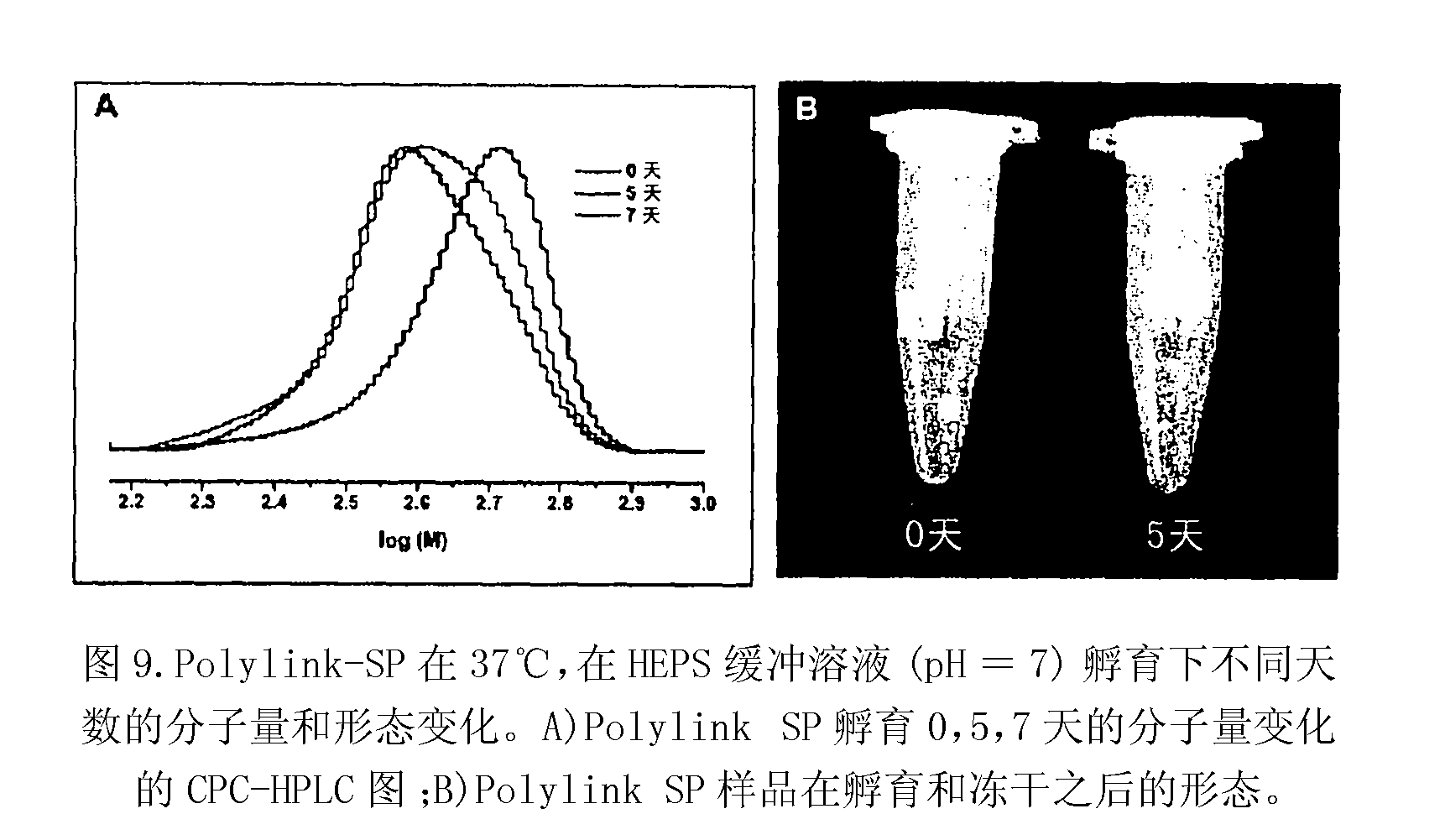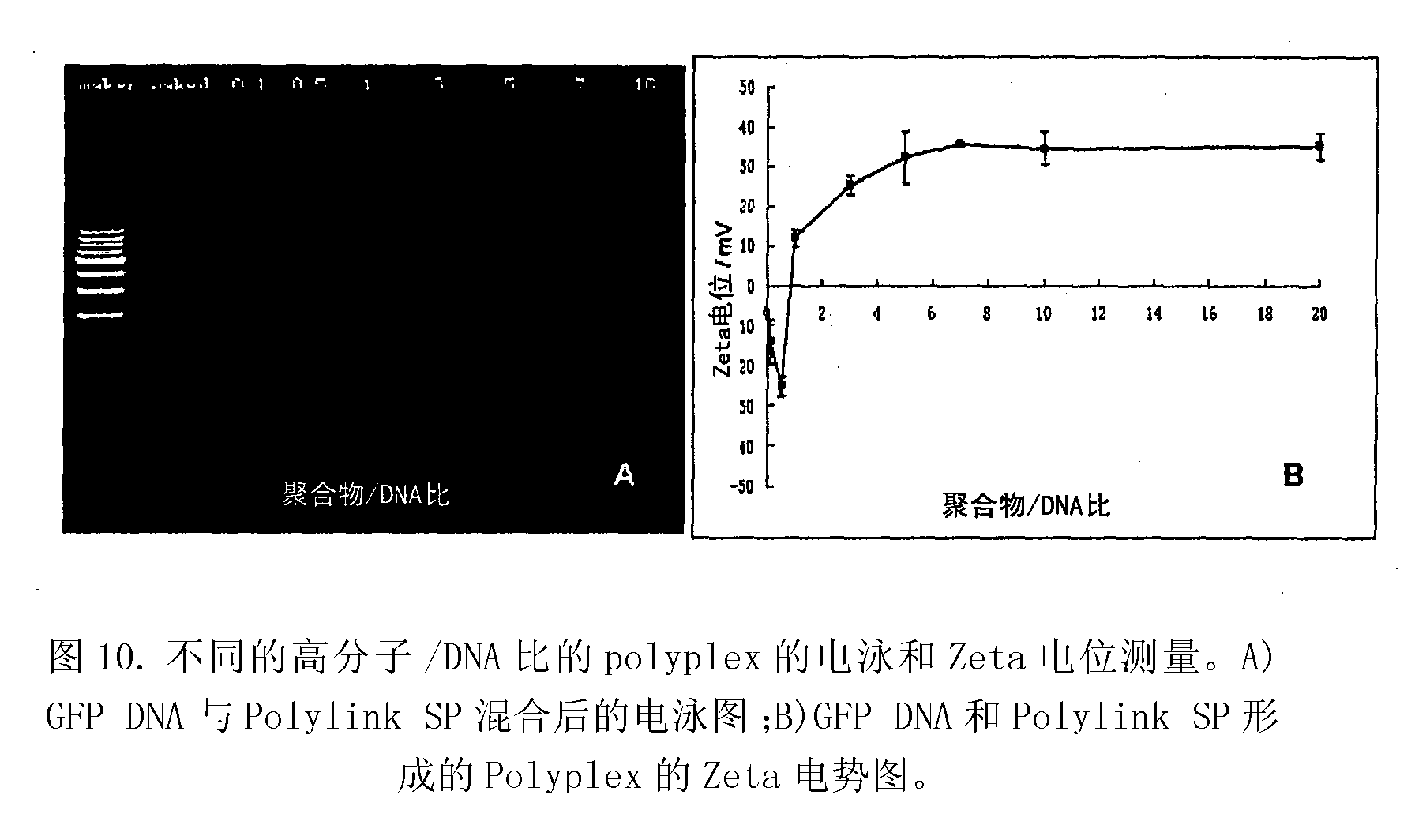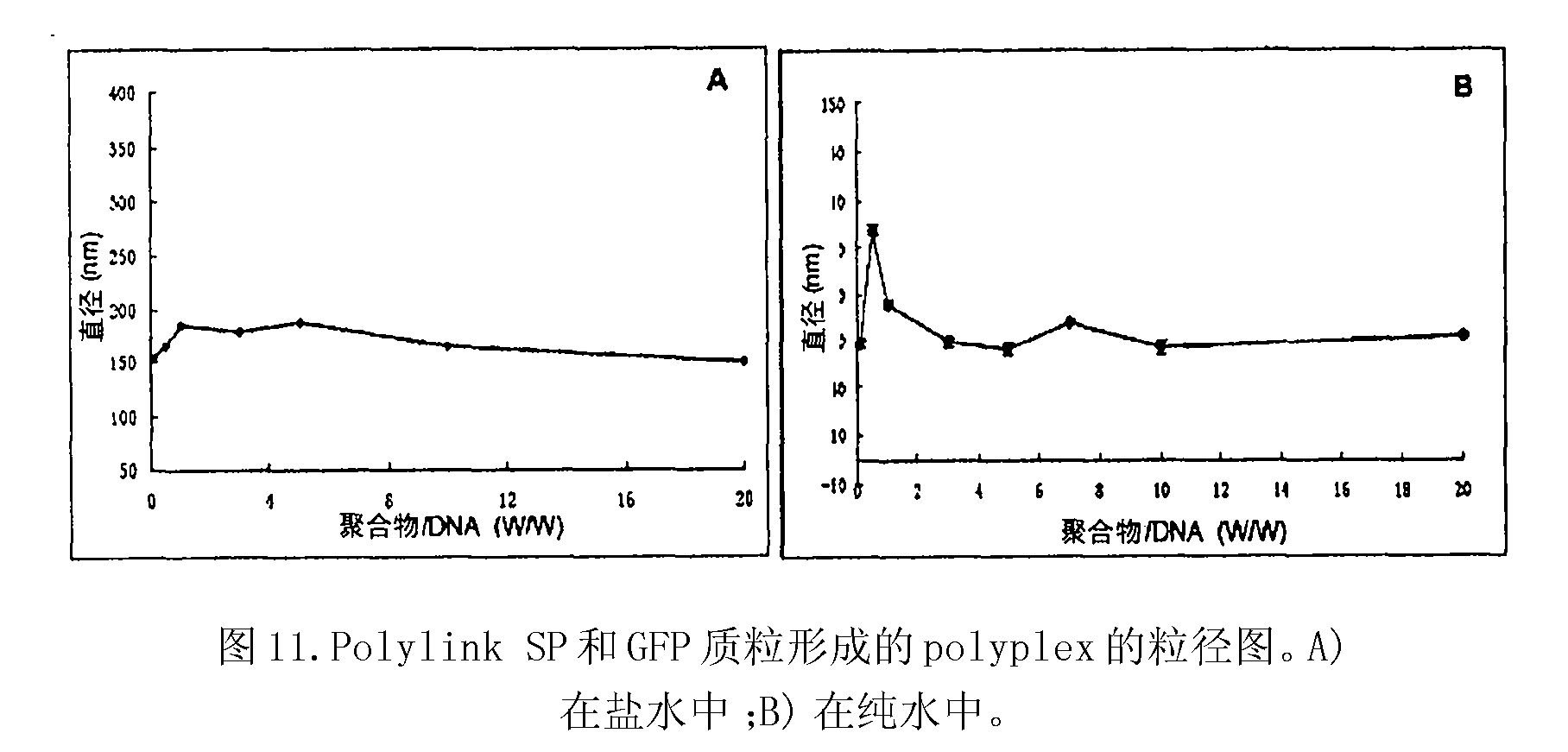Polycationic gene carriers formed of endogenous amino group-bearing monomers
An endogenous, cationic polymer technology, applied in the field of polycationic gene carriers formed by endogenous amino-carrying monomers, can solve the problems of complex structure and diverse metabolism in the carrier system.
- Summary
- Abstract
- Description
- Claims
- Application Information
AI Technical Summary
Problems solved by technology
Method used
Image
Examples
Embodiment 1
[0040] Example 1. Synthesis of polyspermine urethane with uncertain structure (see figure 1 A and 1B)
[0041] Spermine is polymerized via urethane bonds. Dissolve 1 equivalent of ethylene glycol dicarbamate or butylene glycol dicarbamate in chloroform, and slowly add dropwise to the stirred spermine dissolved in chloroform and triethylamine under a nitrogen atmosphere at 0°C In solution. After that, the reaction solution was warmed to room temperature and stirred for 12 hours. After evaporating and removing the solvent, the obtained polymer particles are dissolved in water and dialyzed with a dialysis bag (Mw=3500) to remove small molecular fragments. The final product was stored at -20°C after lyophilization.
Embodiment 2
[0042] Example 2. Synthesis of linear polyspermine urethane (see figure 2 A and 2B)
[0043] In order to synthesize linear polyspermine urethane, the two primary amino groups of spermine need to be protected, that is, under nitrogen, add trifluoroethyl acetate to the spermine solution (methanol as the solvent) at -78°C, and then Stirring was continued for 1 hour at 0°C. Product N 1 , N 14 -Bis(trifluoroacetyl)spermine is obtained by evaporating the solvent, and its polymer is obtained by the procedure of Example 1. After the completion of the polymerization reaction, the removal of the protective group of the amino group and the trifluoroacetate group was achieved by treating the polymerization product with 30wt% ammonia water (stored in a sealed state) at 60°C for 8 hours. The final polycation is finally obtained by removing small molecular fragments with a 3500 mass dialysis membrane.
Embodiment 3
[0044] Example 3. Synthesis of linear polyspermine amide (see image 3 )
[0045] The synthesis method of linear polyspermine amide bond is the same as that of polyspermine urethane, except that 1 equivalent of ethylene glycol dicarbamate or 1,4-butanediol dicarbamate is 1 equivalent Succinyl chloride instead.
PUM
 Login to View More
Login to View More Abstract
Description
Claims
Application Information
 Login to View More
Login to View More - R&D
- Intellectual Property
- Life Sciences
- Materials
- Tech Scout
- Unparalleled Data Quality
- Higher Quality Content
- 60% Fewer Hallucinations
Browse by: Latest US Patents, China's latest patents, Technical Efficacy Thesaurus, Application Domain, Technology Topic, Popular Technical Reports.
© 2025 PatSnap. All rights reserved.Legal|Privacy policy|Modern Slavery Act Transparency Statement|Sitemap|About US| Contact US: help@patsnap.com



